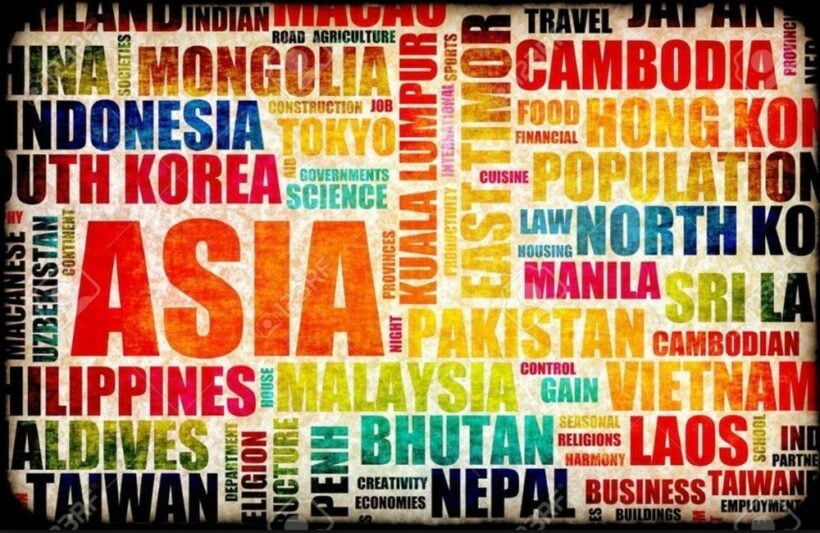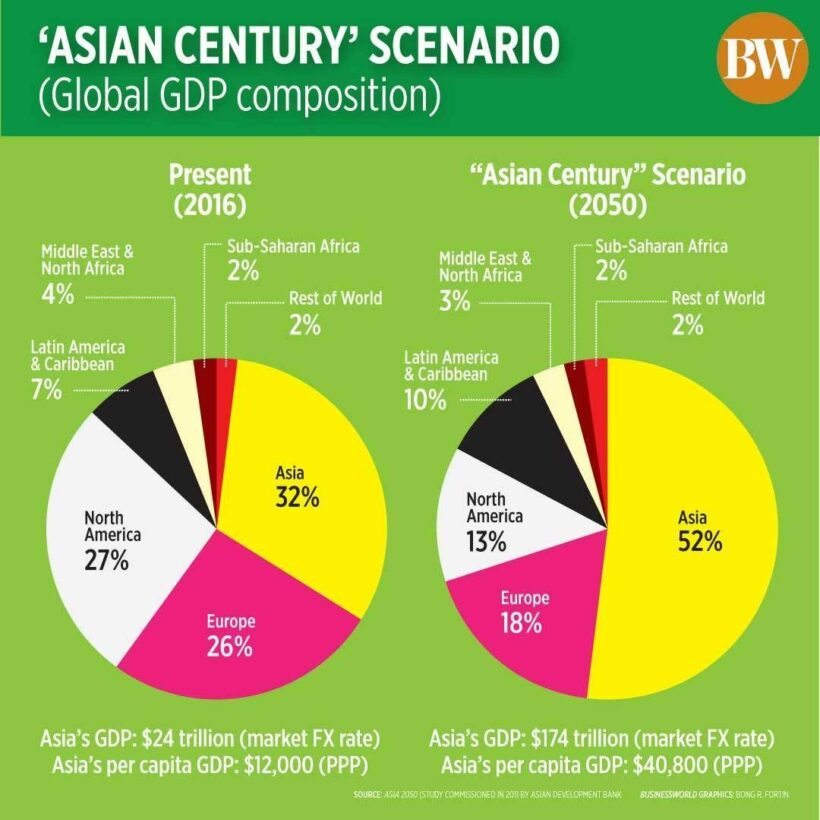Sit down, shut up and hang on – The Asian century is here

GRAPHIC: paragkhanna.com
In the nineteenth century, the world was ‘Europeanised’. In the twentieth century, it was ‘Americanised’. This century it is all about being ‘Asianised’.
With more than half of the world’s population, Asia has gone swiftly from low to middle-income status in a single generation. Today, its global share of trade grows quickly, along with capital, people, knowledge, transport, culture, and resources. Collectively, Asian economies are now making the biggest impact on the global economy.
By 2040, Asia is expected to generate more than 50% of world’s GDP and nearly 40% of global consumption.
The region now accounts for about a third of global trade in goods, up from just a quarter ten years ago. In the same period its share of global air travellers has risen from 33% to 40%, and its share of capital flows has gone from 13% to 23%.
This has fueled huge growth in Asia’s cities. The region is home to 21 of the world’s 30 largest cities, and four of the ten most visited with tourism a booming export for many existing and emerging tourism hot spots.
Some of Asia’s lesser known cities are also seeing growth. For example, in Yangon, Myanmar’s capital, foreign direct investment in technical sectors went from virtually zero in 2007 to US$2.6 billion in 2017,
Bekasi, a smaller city near Jakarta, has emerged as the centre of Indonesia’s automotive and motorcycle industry. And Hyderabad, which registered more than 1,400 patents in 2017, is quickly catching up with India’s Silicon Valley, Bangalore.
Around 60% of Asian countries’ total trade in goods occurs within the region, helped by integrated supply chains. More than 70% of Asian startup funding comes from within the region, and 74% of travel within Asia is taken by Asians.
What makes these flows work is diversity within the region. There are at least four “Asias,” each at a different stage of development.
The first Asia is China, the anchor economy. In 2013-17, China accounted for 35% of Asia’s total outward FDI, with about one-quarter of that going to other Asian countries. China accounted for 44% of the world’s patent applications in 2017.
The second, “Advanced Asia,” also provides technology and capital. With outward FDI of 1 trillion dollars, these countries accounted for 54% of total regional FDI outflows in 2013-17. South Korea and Japan are the powerhouses here.
Then there’s “Emerging Asia,” a diverse group of small emerging economies that provide labour and have huge growth potential, due to rising productivity and consumption. These economies are closely integrated with their neighbours: their average share of intraregional flows of goods, capital, and people is the highest of the four Asias, at 79%.
The fourth group, “Frontier Asia and India,” has the lowest average share of intraregional flows, with just 31%, but continues to grow quickly with the world’s fastest growing middle class.
SOURCE: Thailand Business News

Latest Thailand News
Follow The Thaiger on Google News:


























